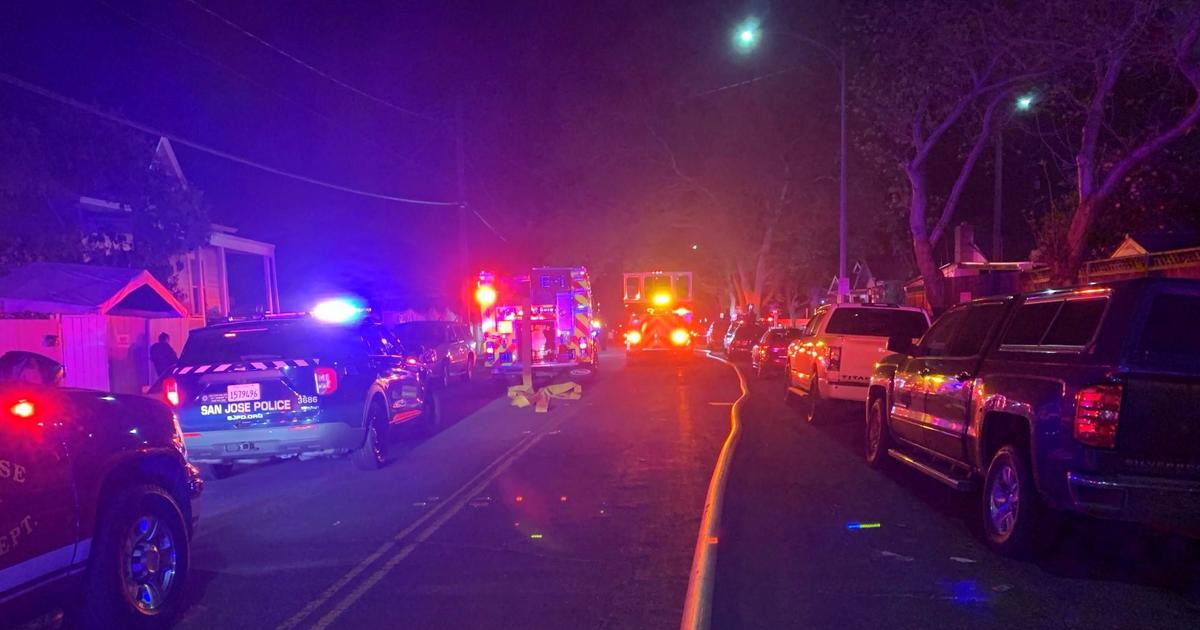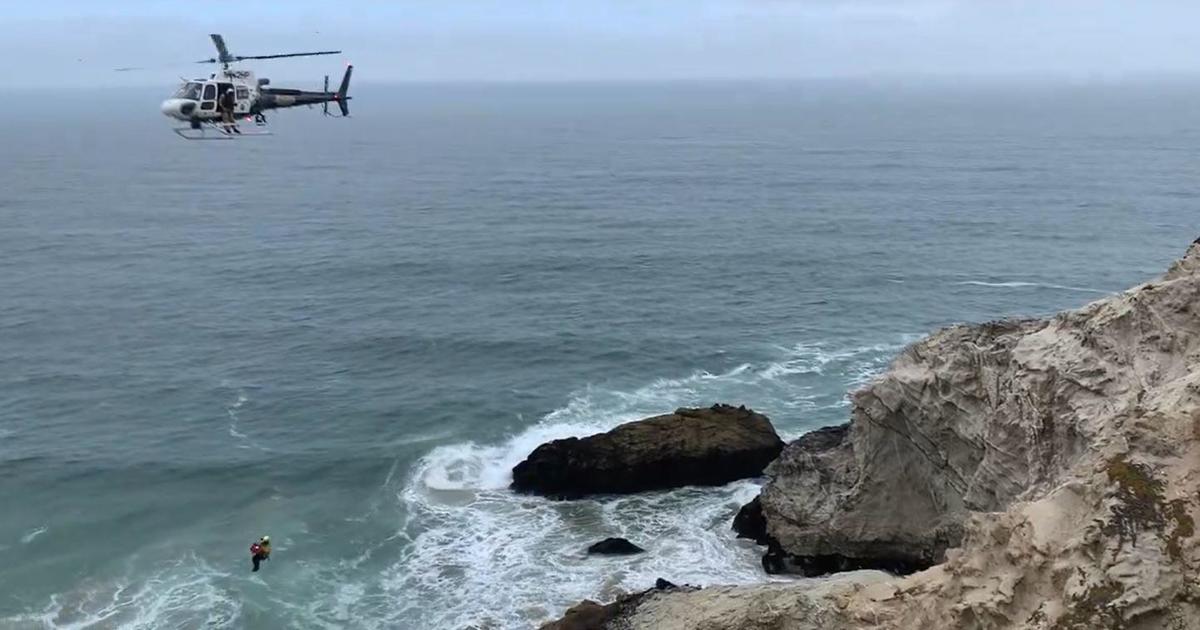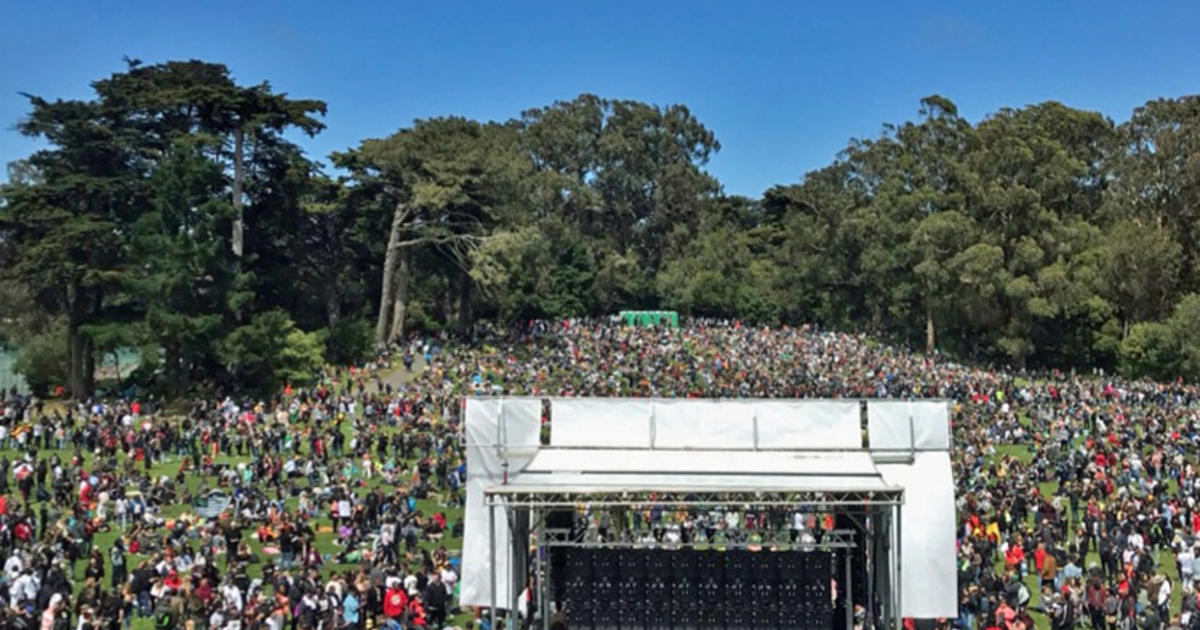Caldor Fire Update: Wall Of Flames Roars Over Echo Summit; Exodus Leaves South Lake Tahoe Deserted
SOUTH LAKE TAHOE (CBS SF) -- A wall of flames from the Caldor Fire roared over Echo Summit at Highway 50 Monday evening, racing down the mountainside toward the Lake Tahoe Basin where thousands of residents were forced to flee their homes in a mass exodus that clogged the few routes out of the region.
Flames burned on both sides of the winding downward slope of Highway 50 -- a familiar stretch of roadway to visitors traveling to Tahoe -- into Highway 89 and Meyers. There were reports that the fire was moving into the southern end of Meyers Monday evening.
"That's a climbing area up there too. That hillside. It's cooked," said Will Cottrell.
The 77-year-old waited until the last minute to leave his home just south of Meyers, turning on the sprinklers and packing up whatever he could
"I'm a physician and so my whole medical home office where I had to work for the last year is now squeezed into the back of the car," said Cottrell, as flames surrounded his neighborhood. "What I see now says bail out."
According to CalFire, they've called in extra strike teams to try to protect the thousands of homes and businesses in the Tahoe basin threatened by the Caldor Fire.
"This is the number one priority in the nation for wildfires right now, so we're able to get the resources we need," said Captain Bob Foxworthy.
Meanwhile, South Lake Tahoe -- a community of nearly 22,000 residents -- had taken on the appearance of a ghost town. For hours, evacuees forced from their homes slowly made their way to safety. Among them was Mel Smothers, who stepped out of his vehicle and serenaded motorists with his violin.
While traffic leaving South Lake Tahoe slowed to a crawl as thousands of residents fled the area -- many said it took several hours just to move a mile or two -- by early Monday evening the streets were eerily quiet and free of traffic.
KPIX reporter Katie Nielsen was there as fire crews made their last ditch attempted to keep the Caldor Fire from coming over Echo Summit into the Tahoe basin below as winds continued to kick up and fan the flames Monday night shortly before 6 p.m.
Nielsen later reported from the mostly deserted streets of South Lake Tahoe once the fire began spotting over the summit. The only people still present were those residents who didn't have cars to evacuate from the area. They could be seen carrying backpacks and duffel bags with their belongings to where evacuation buses would be departing the area.
Evacuation centers have been set up at the Douglas County Community Center at 1329 Waterloo Lane in Gardnerville, Nevada and at the Truckee Veterans Hall at 10214 High Street in Truckee.
At the Sierra-at-Tahoe ski resort, crews turned snow-making machines into makeshift fire hoses. Authorities said the fire charred some of the land and surrounding trees, but fire crews were able to save all of the resort's buildings and believe all of the chair lifts are still intact.
As of Monday evening, the raging fire grew to more than 186,568 acres and was 15 percent contained. Three firefighters and two civilians have suffered injuries and a Galt police officer en route to help with law enforcement in the fire zone was killed in an accident.
At 11 a.m., the lower Lake Tahoe Basin area was ordered to evacuate. All residents were instructed to leave the area east on Highway 50 towards Nevada.
Cal Fire Chief Thom Porter said at a briefing on the state's wildfires that the Caldor Fire grew by more than 20,000 acres since Sunday and in conditions had fire spreading in all directions.
ALSO READ: Caldor Fire Threatens Beloved Camp Concord on Shore of Lake Tahoe
"Difficult road conditions, hard to access. It's been burning in heavy timber, just very, very difficult conditions," said Porter. "We've been making headway at times. I reported last week about how we have effectively an inversion that puts kind of a lid on fire activity. But then when the air clears, it's like taking a lid off of your pot of boiling water. All of a sudden, there's that plume of heat and steam that comes out, same thing happens on a fire. Also it sucks in oxygen from all directions, put fires and spot fires in all directions. That's what happened yesterday."
Porter said after flames reached Twin Bridges and the Sierra-at-Tahoe ski area, fire was now inside the Tahoe basin with spot fires happening in Lower Echo Lake, Aloha Lake and Desolation Wilderness areas.
It also marked the second time a wildfire had traversed one end of the Sierra to the other, yet another example of the state's unprecedented wildfire situation.
"We haven't had wildfires burn from one side of the Sierras to another," said Porter. "We did that with the Dixie [Fire], now we have with the Caldor. Two times in our history and they're both happening this month. So we really need to be cognizant that there is fire activity happening in California that we have never seen before."
Porter urged those who are in evacuation warning areas to consider evacuating early, before a mandatory evacuation order is issued.
"Be ready now. Be ready now, before there's a warning," said Porter. "When there's a warning, you put everything in the car and you go, or you wait for the order and you go. Be ready now."
The El Dorado County Sheriff's Department earlier issued mandatory evacuation orders for the western shore of Lake Tahoe Monday morning from Emerald Bay to Tahoma on the Placer County line and then west to the border of the Desolation Wilderness.
Also included in the order was the residential and commercial area leading up to and including the Highway 50 intersection with Lake Tahoe Boulevard -- a popular turnoff to head to the casinos located in Stateline -- and the area east of Pioneer Trail and south to Heavenly Valley ski resort.
The evacuations came because the fire has been advancing at a frightening pace.
"We had a gain in acreage of more than 25,000 acres," said Cal Fire Operations Chief Tim Ernst. "Yesterday as the result of the weather change it pushed the fire to the east by approximately 8 1/2 miles."
The fire made a run on Sunday from around Strawberry on Highway 50 northeast to Echo Lake, where it was burning on Monday morning.
"A number of structures were lost in that area," Ernst said.
The job of trying to contain the Caldor Fire won't be getting any easier for firefighters over the next few days. A Red Flag Warning is in effect for the area through Wednesday night with hot temperatures, low humidity and high winds forecast.
So far, the flames have destroyed 472 homes -- many of them residences in the fire-ravaged community of Grizzly Flats -- and was threatening another 21,451 structures. Over 24,000 residents have been forced from their homes in the small communities that line Highway 50 -- a major traffic artery connecting Sacramento and South Lake Tahoe.
On Sunday night, residents in Myers, Fallen Leaf Lake, Kirkwood and Christmas Valley were told to leave their homes immediately as cabins burned near Camp Sacramento. Flames threatened the Sierra-at-Tahoe ski resort where giant snowmaking machines were used to wet down the grounds and 25 additional strike teams were rushed into the fight keep flames from roaring into South Lake Tahoe.
As a precaution, officials also used school buses and ambulances to evacuate Barton Memorial Hospital in South Lake Tahoe.
CALDOR FIRE:
"Today has been a rough day," said El Dorado National Forest Supervisor Jeff Marsolais at a Sunday night news conference. "There is no bones about it. I think the team is doing an excellent job of trying to stay in front of a very evolving fire...Today it let loose."
Cal Fire Operations Section Chief Erich Schwab said clearing skies Sunday triggered soaring pyrocumulus clouds that whipped up the flames along the eastern edge of the massive blaze.
"To put it in perspective, we've been seeing about a half-mile of movement on the fire's perimeter each day for the last couple of weeks, and today, this has already moved at 2.5 miles on us, with no sign that it's starting to slow down," he said at Sunday evening news conference.
And now a Red Flag Warning for gusty winds and bone dry humidity levels was set to go into effect at 2 p.m. Monday.
The fire has jumped to the north side of Highway 50 and was established on Ralston Ridge. Crews took defensive measures to protect structures to the south at the Sierra-at-Tahoe ski resort, but overnight photos from the resort showed flames approaching ski lifts.
Near Camp Sacramento, the fire burned several cabins Sunday evening along Mt. Ralston Road.
Tahoe is an attractive vacation spot for Bay Area residents, particularly with Labor Day weekend approaching, but South Lake Tahoe Fire Chief Clive Savacool said if they are in the area right now, they need to leave.
"Tourists should be gone," he said. "If anybody is still here as a tourist, they need to pack up and leave. Anybody who doesn't have to be in South Lake Tahoe needs to get out now."
Among the many other challenges facing the 3,500 firefighters battling the blaze is a terrain that generates its own winds.
"This fire is in an area that has multiple deep, steep drainages," said Steve Volmer, a fire behavior analyst with Cal Fire. "We have a saying -- 'Where water flows, wind goes.' So you can see all the problem areas of the fire where we have had issues have been in those deep, steep drainages along Highway 50...They (the winds) are continuing to send out spot fires along Highway 50, down in Camp Creek and Slug Gulch."
Those spots are being ignited 3/4 of a mile ahead of the main fire.
Volmer said the flames were also being fueled by the fire history of the region.
"Right now, we have a lot of heavy, dead, down material inside this fire area," he said. "The area has very little fire history dating back to 1940 and almost no recorded fire history before 1940. There are a large number of extremely large diameter logs that are still cooking, on fire. They are still burning down and still producing all that smoke."
Firefighters will also be dealing with Red Flag Warning weather conditions over the fire zone that will develop early Monday and stretch into Tuesday.
Cal Fire meteorologist Jim Dudley said winds will be kicking up to as much as 35 mph gusts in the upper elevations near Echo Summit.
"Those are going to begin Sunday night and increase in speeds on Monday and they will persist through Monday night and into Tuesday," Dudley said of the winds.
Highway 50 continues to be closed from the Sly Park Road exit to the Highway 89 interchange in Meyers.
The fire, which was first reported on August 14 near the community of Grizzly Flats, is not expected to be fully contained until at least September 8. Officials said the cause is under investigation.



